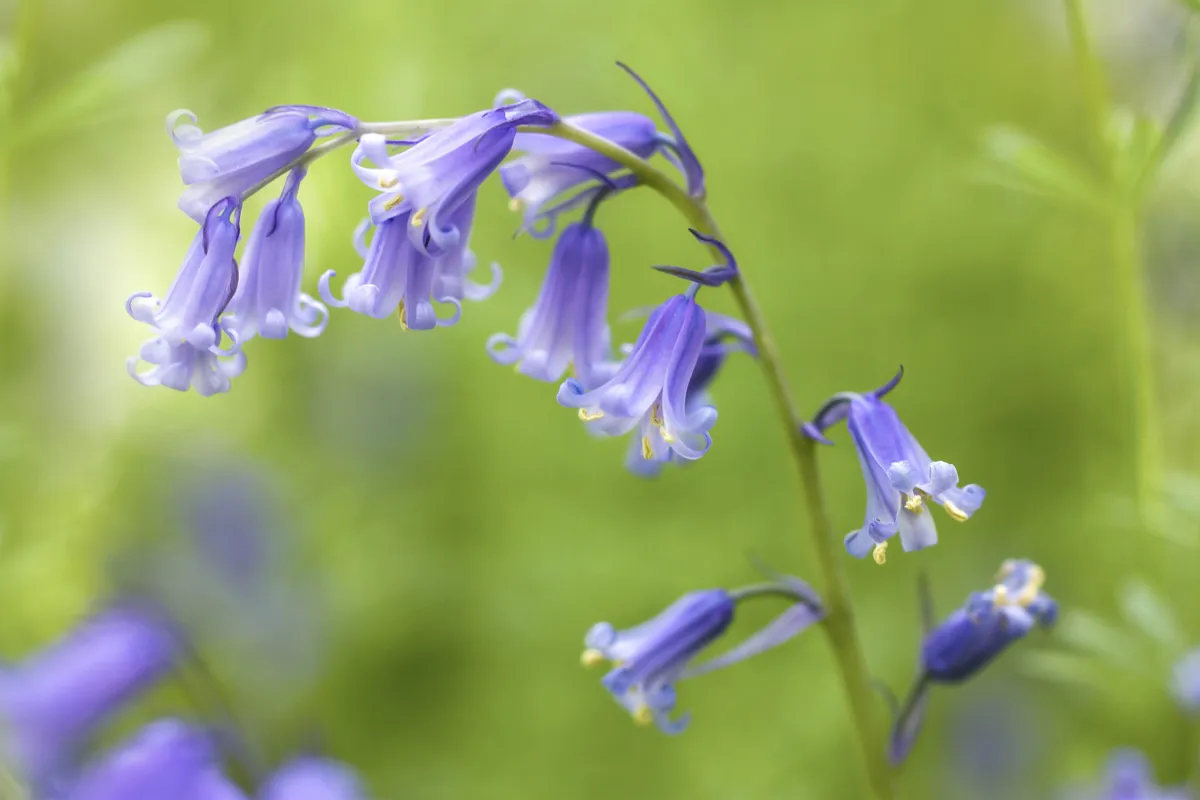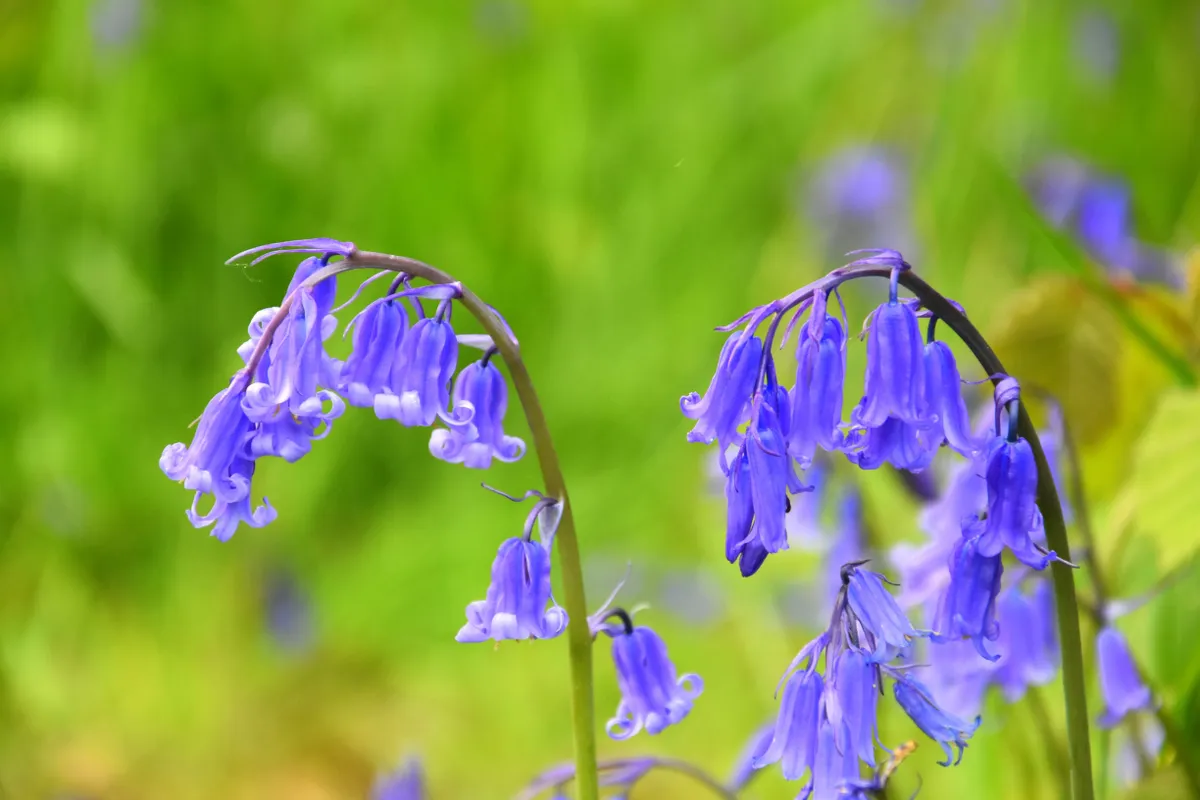The English bluebell (Hyacinthoides non-scripta) is one of the highlights of spring. It is a native perennial wild flower with arching stems that are lined with nodding, violet (and sometimes pink or white), bell-shaped blooms. Bluebells are often seen growing en masse, making carpets of blue in woodlands, moorland and under hedges. Bluebells are an excellent spring bulbs for pollinators, and the flowers have a light honey scent.
You can visit bluebell woods and other sites around the UK. Don't miss our round up of the best places to see bluebells.
You may also like
- A woodland garden with a modern home
- Where to see bluebells near me
- What's the difference between Spanish and English bluebells
- Invasive plants: here's what not to plant and how to avoid a fine
When do bluebells flower?
Bluebells flower in late April or early May, depending on the weather in the preceding weeks.
The difference between Spanish bluebells and English bluebells

English bluebells have darker blue, nodding and scented flowers, and are around 40cm tall.
Spanish bluebells have paler blue flowers and more upright stems, thicker foliage and are taller at 60cm. They have no scent.

Many of the bluebells seen growing in gardens are actually Spanish bluebells, Hyacinthoides hispanica. They can be invasive. There are fears that Spanish bluebells will cross-breed with the native English bluebell, displacing this important native plant. If you live near a bluebell wood, make sure that you are growing English bluebells.
Here's more from Westonbirt Arboretum on the difference between Spanish and English bluebells.
How to grow bluebells

Where to grow bluebells in the garden
English bluebells are woodland plants, so like humus-rich, moist soil. In the garden, you can grow English bluebells under deciduous trees or shrubs, under hedges or naturalised in grass – they are more suitable for meadow-style plantings rather than lawns, as their foliage doesn't die back until later in the year.
When to plant bluebells
Be sure to buy bluebells from a reputable supplier. Some bluebells sold as English bluebells are actually Spanish ones.
Planting bluebell bulbs
You can plant bluebell bulbs in autumn – plant 10-15cm deep and 15cm apart.
Planting bluebells in the green
However it's best to establish bluebells by buying freshly lifted plants 'in the green' – ordered online or by mail order and planted just after flowering in spring. Plant them at the same depth as they were before - obvious from where the foliage begins to turn white.
Propagating bluebells

Bluebells self seed. They can also be lifted and divided in summer, but they may not flower the following spring. You can collect seed to sow in late summer – it will take seven years for the resulting plants to flower.
What to do with bluebells after flowering
Leave the foliage of bluebells to die back naturally – this will feed next year's bulbs. Do not tread on the plants, as this can damage them. They can take several years to recover.
Don't miss the bluebell woods near you